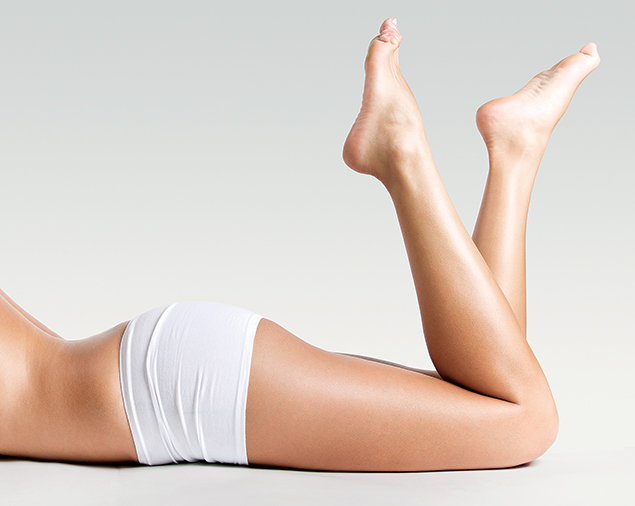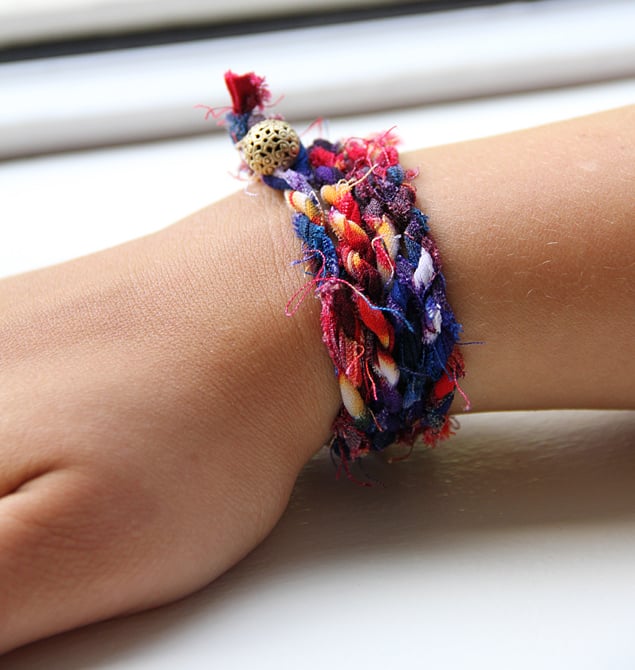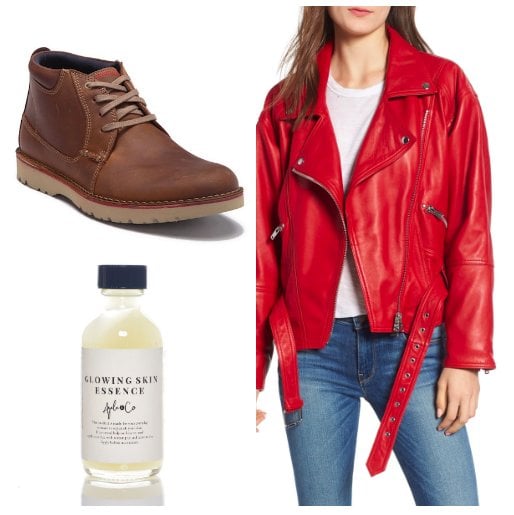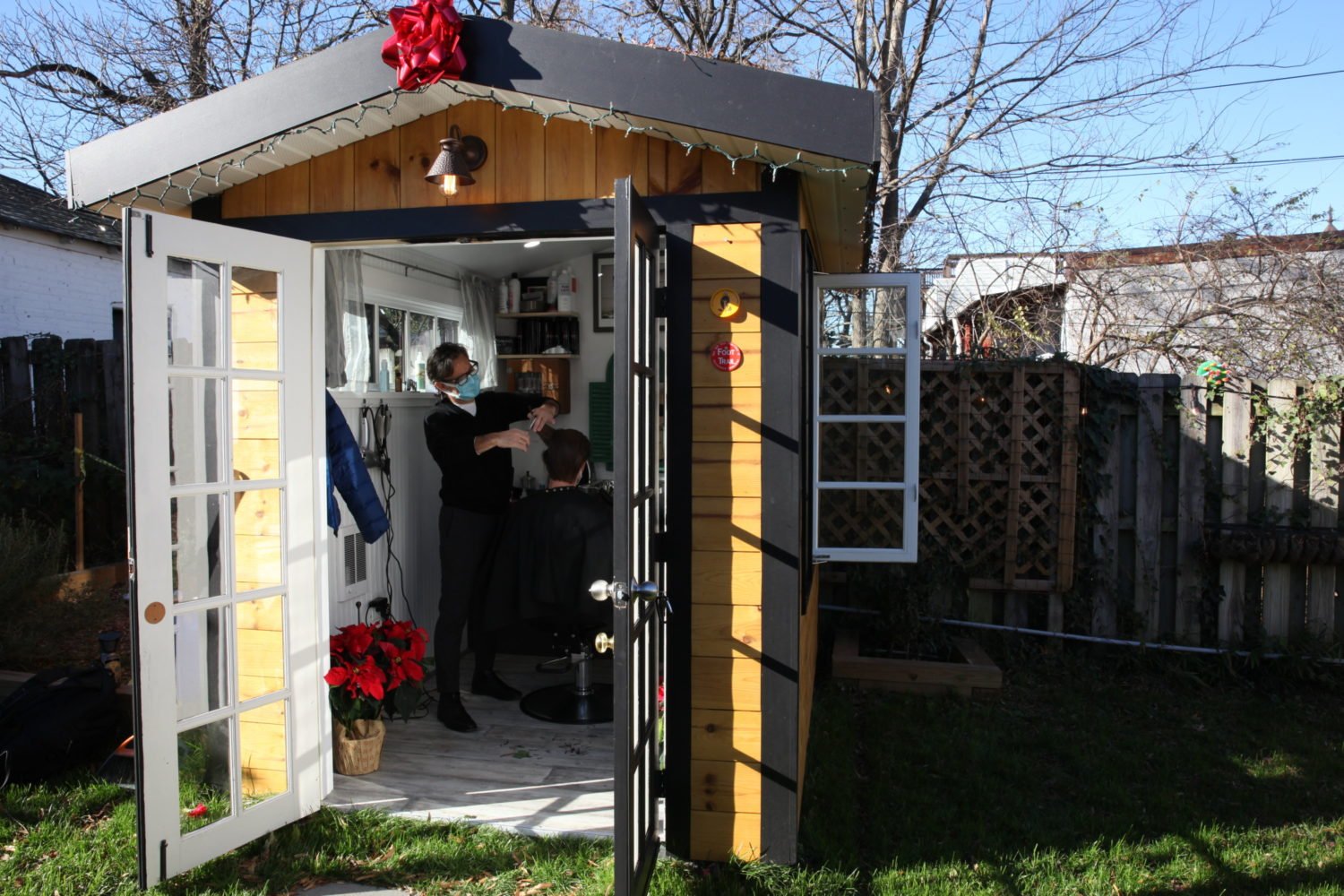Talk about a war against women: Cellulite—referred to in some circles as the “C word”—affects women but few men. Some 85 percent of women—of all shapes and sizes—say they struggle with it.
“It doesn’t matter how thin or heavy you are; all females have a certain amount of cellulite,” says Dr. Rondi Walker, who practices at Walker Plastic Surgery in DC and is a clinical assistant professor of surgery at Georgetown University School of Medicine. “Female fetuses examined at four months in utero already demonstrate the development of cellulite.”
Cellulite is caused largely by three factors, says Dr. Nia Banks of the Beaux Arts Institute of Plastic Surgery in Lanham. First are the connective-tissue bands, or fibers, under the skin that are supposed to hold fat down where it belongs. In women, these fibers are arranged like pillars. As we age, the bands stiffen. This is where the second problem—fat—comes into play. When fat pockets are squeezed between these rigid bands, they’re pushed up into the skin, like quilting in a mattress. Which leads us to issue number three, the skin itself: We lose collagen, a protein that gives skin its structure, every day. As skin gets thinner, the fat pushing up through those bands becomes more noticeable.
The reason that men—even those who are overweight—tend to be cellulite-free (only about 10 percent of patients are male), is because their bands are crisscrossed, creating a mesh-like effect on the fat, like built-in Spanx. Estrogen and other female hormones have also been shown to play a role in cellulite development.
While nothing can get rid of cellulite permanently, there are more ways than ever to address the lumps and bumps that most commonly show up on thighs, hips, and buttocks. From lasers to creams, here are the most popular techniques for coaxing cellulite into submission.
Massage it Away
Besides the fat/skin/fibers conundrum, some experts believe that cellulite is due to poor circulation. As the blood vessels that bring nutrients to the skin begin to deteriorate—a process that can start as early as puberty—they leak lymphatic fluid into fat cells, causing the cells to puff up, cluster together, and push toward the surface of the skin.
Massaging dimpled areas is believed to help break apart the bumps, especially if you use the right ingredients. Some scrubs, such as Red Flower’s Lemon Coffee Blossom Olive Stone Scrub ($66), contain ground coffee—caffeine has been shown to tighten skin instantly (though mildly and temporarily). A scrub also exfoliates, a step that’s key: Dead skin cells can prevent any smoothing creams you’re applying from fully penetrating the skin.
Another form of exfoliating massage that’s been a treatment of choice in Europe is dry brushing with cactus bristles, a very fine natural fiber.
Tina West, a dermatologist at the West Institute in Chevy Chase, says any effect of body brushing is fleeting because it doesn’t address problems under the skin: “It may lead to temporary swelling, masking surface irregularities associated with cellulite.”
Still, if temporary is all you want, you could invest in a brush and do it yourself. Or consider Bliss Spa’s 75-minute FatGirlSlim treatment ($155; W Hotel, 515 15th St., NW; 202-661-2416).
Endermologie, another option offered at many spas, kneads the skin with a rolling suction device in an effort to break up cellulite, boost circulation, and stimulate collagen production.
“Supporters of Endermologie believe that increasing circulation reduces subcutaneous fat and increases blood flow and lympathic draining, so excess fluid and fat cells are eliminated,” says Dr. Banks. “But the other train of thought is that Endermologie simply causes swelling so that cellulite is less noticeable. Most patients are pleased with the results, but they require ongoing maintenance—shortly after you stop, everything goes back to how it looked before.”
Most women need multiple sessions, which cost $50 to $150 each, to maintain results.
Creams That Work
A review of multiple studies published in the Journal of the European Academy of Dermatology and Venereology found that cellulite creams can reduce thigh circumference, though by an average of only about 0.2 inches. While we’re not talking Heidi Klum legs in a bottle, it’s a slight improvement.
“Any effect of topical creams on the appearance of cellulite is temporary,” says Dr. West. “There’s no evidence that any of these products penetrate deeply enough into skin to confer a significant effect.”
That said, besides caffeine, topical ingredients believed to smooth and tighten temporarily include coffee berry and aminophylline. One of the most effective—and underused—anti-cellulite ingredients is retinol (what skin ailment can’t it cure?), which West says thickens the epidermis and improves skin texture.
Studies have shown that caffeine and retinol work better together. For a one-two punch, first apply a prescription Retin-A or retinol product such as Murad Firm and Tone Serum ($78), followed by a caffeine-loaded one. You might try Osmotics Cellulite Control Body Glow CC Cream ($75), which delivers caffeine and antioxidants in a slightly tinted formula that helps blur imperfections.
Bigger Guns
If massage and creams won’t budge the bumps to your satisfaction, physicians offer high-tech, in-office procedures using radio frequency or lasers, often in conjunction with suction and massage.
Devices such as VelaShape, SmoothShapes, and Viora Reaction are fairly painless and employ heat energy to shrink fat cells temporarily. The procedure feels like a deep massage. The devices knead the skin and fat while a vacuum device adds suction.
“In the majority of cases, these procedures tighten skin and improve the appearance of cellulite but don’t make it go away completely,” says Dr. Jennifer Parker Porter of Chevy Chase Facial Plastic Surgery.
Most people achieve the best results after four to eight 30-minute sessions, which cost $300 to $500 each. Newly firmed thighs and backsides last six months to two years or longer and may require touchups.
If you’re determined to win not just the battle but the war against those divots and dimples in one swift attack—at whatever price (in this case, $5,000 to $7,500)—a new FDA-approved treatment called Cellulaze may be for you. Like other lasers, it stimulates blood flow as well as new collagen formation. Unlike other lasers, it penetrates past skin’s upper layer to get at fat and connective tissues.
During the 60-to-90-minute session, a tiny fiber-optic laser is inserted below the skin to melt fat bulges. Next, the laser fires its energy at fibrous bands, releasing them. A local anesthetic minimizes discomfort, but expect swelling and bruising for about ten days and no vigorous exercise for a week. Results slowly materialize over three months to a year and last up to two years.
Permanent Cure on the Horizon?
Arriving in doctors’ offices this year is Cellfina, a new FDA-approved treatment that shows a long-term reduction in cellulite, according to studies.
“It employs a small needle to apply light, quick, and repeated pressure on the cellulite, penetrating through the skin and into the bands responsible for dimpling, causing them to fray and release,” says Dr. Tina Alster, whose Washington Institute of Dermatologic Laser Surgery, in DC, is the first in the area to offer it.
The procedure takes about an hour, and areas to be treated are numbed with lidocaine injections. Although there’s minimal bleeding, expect bruising for a few days. Within a month, there should be a noticeable reduction of cellulite, with results lasting as long as weight gain is avoided. Cost: $2,000 to $4,000, depending on the number of areas treated.
Exercise It Away
Losing weight doesn’t diminish cellulite—in fact, it can make the divots look worse because the skin can become saggier.
The key is to burn off fat and replace it with muscle to fill out the skin. A study in the Journal of Applied Physiology found that fat oxidation increased by 36 percent after high-intensity interval training (HIIT). Participants saw results in two weeks.
The important thing is to push yourself to the limit for short bursts of time. “A true HIIT workout intersperses periods of all-out effort with periods of rest,” says Cheryl Davis, a personal trainer in Alexandria.
Here’s Davis’s favorite cellulite-busting workout:
• On a treadmill, warm up for five minutes by walking or running.
• Then run for one minute at a moderate high speed (a 6 or 7 on a scale of exertion from 1 to 10).
• Next, set the treadmill at a high incline (7.0 to 15.0) and walk for one minute at moderate speed without holding onto the handrails.
• Lower the incline and recover at a slow walk for one minute.
• Repeat the entire cycle for 30 minutes.
• Cool down for five minutes.
A Bit of Camouflage
When all else fails, do as Hollywood does: Add a bit of color to the skin to make it look better. Jennifer Lopez’s makeup artist mixes a darker shade of Lopez’s regular foundation—L’Oréal Paris True MatchSuper Blendable Makeup—with La Mer lotion and applies the mixture all over J. Lo’s legs.
Other favorites include Miracle Skin Transformer Body SPF 20 ($34) and St. Tropez One Night Only Instant Glow Body Lotion ($18), which both work like a tinted moisturizer, adding color while smoothing out skin tone. They stay put all day but wash off in the shower.
Want something longer-lasting? Consider a self-tanner such as Nivea Sun-Kissed Radiance moisturizer ($8, drugstores).
This article appears in the February 2015 issue of Washingtonian.



















